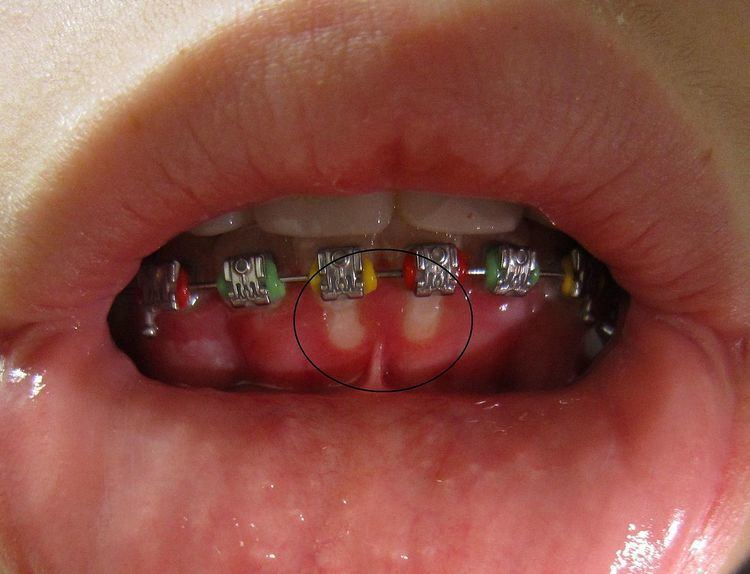Specialty infectious disease ICD-9-CM 054.2, 523.10 | ICD-10 A69.1, B00.2, MedlinePlus 001052 | |
 | ||
Gingivostomatitis (also known as primary herpetic gingivostomatitis or orolabial herpes) is a combination of gingivitis and stomatitis, or an inflammation of the oral mucosa and gingiva. Herpetic gingivostomatitis is often the initial presentation during the first ("primary") herpes simplex infection. It is of greater severity than herpes labialis (cold sores) which is often the subsequent presentations. Primary herpetic gingivostomatitis is the most common viral infection of the mouth.
Contents
Primary herpetic gingivostomatitis (PHGS) represents the clinically apparent pattern of primary herpes simplex virus (HSV) infection, since the vast majority of other primary infections are symptomless. PHGS is caused predominantly by HSV-1 and affects mainly children. Prodromal symptoms, such as fever, anorexia, irritability, malaise and headache, may occur in advance of disease. The disease presents as numerous pin-head vesicles, which rupture rapidly to form painful irregular ulcerations covered by yellow–grey membranes. Sub-mandibular lymphadenitis, halitosis and refusal to drink are usual concomitant findings.
Symptoms
The symptoms can be mild or severe and may include:
Differential Diagnosis
Gingivostomatitis symptoms in infants may wrongly be dismissed as teething. "Coincidentally, primary tooth eruption begins at about the time that infants are losing maternal antibody protection against the herpes virus. Also, reports on teething difficulties have recorded symptoms which are remarkably consistent with primary oral herpetic infection such as fever, irritability, sleeplessness, and difficulty with eating." "Younger infants with higher residual levels of antibodies would experience milder infections and these would be more likely to go unrecognized or be dismissed as teething difficulty."
Gingivostomatitis must also be differentiated from herpangina, another disease that also commonly causes ulcers in the oral cavity of children, but is caused by the Coxsackie A virus rather than a herpes virus. In herpangina, ulcers are usually isolated to the soft palate and anterior pillar of the mouth. In herpetic gingivostomatitis, lesions can be found in these locations, but they are almost always accompanied by ulcerations on the gums, lips, tongue or buccal mucosa and/or by hyperemia, hypertrophy or hemorrhage of the gums.
Treatment
Treatment includes fluid intake, good oral hygiene and gentle debridement of the mouth. In healthy individuals the lesions heal spontaneously in 7–14 days without scarring.
